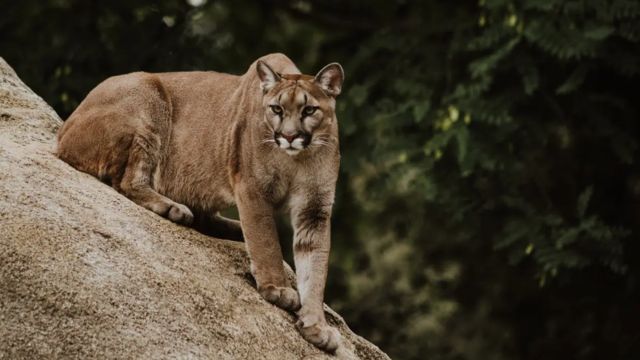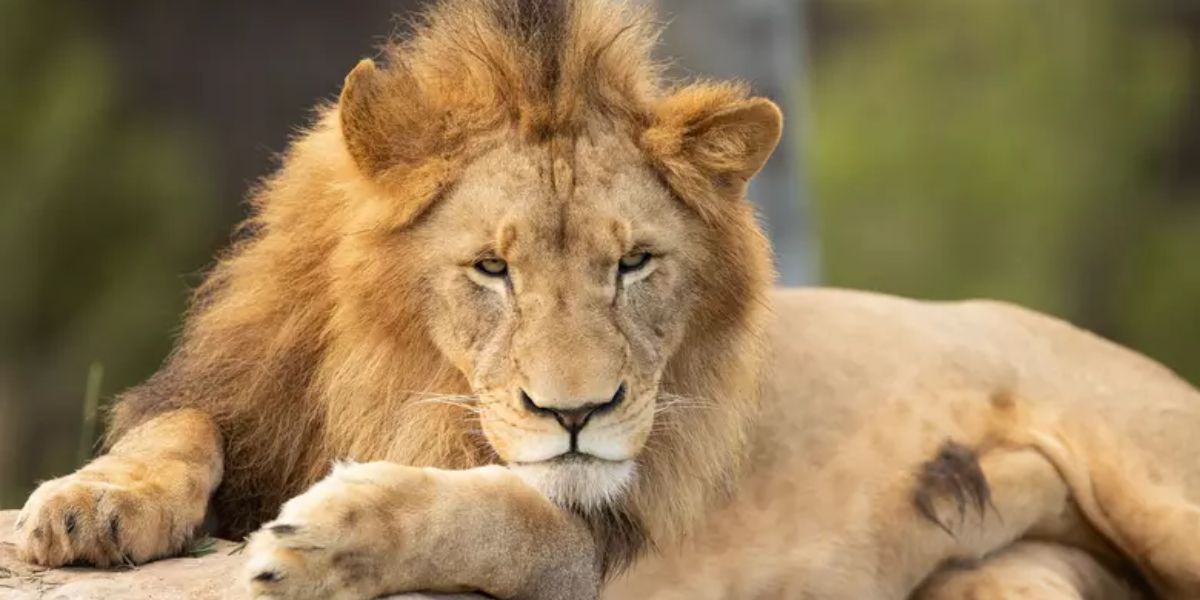The Connecticut Department of Energy and Environmental Protection (DEEP) states that bobcats are the only large wildcats in the state—meaning there are no mountain lions.
For years, the question of whether mountain lions—also known as cougars or pumas—are present in Connecticut has sparked debate among wildlife experts, residents, and conservationists. The argument seems to never end, with both sides presenting compelling evidence and equally strong doubts. Some claim that mountain lions have returned to the state, while others argue that sightings and reports are nothing more than myths, misidentifications, or even hoaxes. As the debate rages on, it’s essential to separate fact from fiction and explore what we really know about these elusive predators.
The Mountain Lion’s Historic Range
Historically, mountain lions once roamed much of North America, including parts of Connecticut. However, by the late 1800s, the species had been extirpated from much of the eastern United States, including New England, due to overhunting, habitat loss, and the depletion of their prey. By the mid-1900s, it was widely believed that mountain lions had been driven out of the region entirely.
Fast forward to today, and mountain lions have been making a comeback in certain parts of the U.S., particularly in western states like California and Colorado, as their populations steadily rebound. But are they reclaiming former territories in the East? That’s where the argument becomes muddied.
The Sightings: Myth or Reality?

One of the primary reasons the debate about mountain lions in Connecticut persists is the frequent reports of sightings across the state. Over the years, numerous residents have claimed to have seen the big cats in forests, fields, and even suburban backyards. Some have provided photos, videos, and footprints, which, on the surface, appear to support the idea that mountain lions are roaming the state once again.
Massachusetts Residents Celebrate Martin Luther King Jr. Day with Snowy Activities
However, wildlife experts have consistently cast doubt on these reports. The most common explanation is that many of the reported sightings could be cases of mistaken identity. In Connecticut, the bobcat—a smaller, but still sizable wild cat—shares a similar body shape and fur coloration with a mountain lion, leading to confusion. Additionally, some reports of mountain lion sightings have been debunked as the result of hoaxes or exaggerations.
Experts also point out that if mountain lions had truly established a breeding population in the state, there would be stronger evidence, such as confirmed kill sites, more frequent sightings, or genetic samples. Despite extensive efforts by wildlife agencies to track these elusive cats, definitive proof remains elusive.
The DNA Evidence
In a few rare cases, there has been physical evidence that some experts believe supports the presence of mountain lions in Connecticut. One of the most compelling pieces of evidence came in 2011 when a road-killed mountain lion was discovered in the town of Milford. DNA testing confirmed that the animal was a mountain lion, and it was later determined that the animal had likely traveled from a population in the Midwest. This raised the possibility that the animal had ventured eastward in search of new territory, a pattern that has been observed in other parts of the country.
Bronx Grocery Stores See Surge in Shoppers Before Snowstorm Hits
However, there is little evidence to suggest that the Milford lion was part of a sustained, growing population in Connecticut. Experts believe that while the occasional mountain lion may pass through the state, it is unlikely that they are establishing permanent residences, primarily due to the lack of suitable habitat and prey density.
Ecological Impact: What Would Mountain Lions Mean for Connecticut?
Even if mountain lions were to establish themselves in Connecticut, their return would raise questions about the impact they might have on local ecosystems. As apex predators, mountain lions play a critical role in controlling populations of deer and smaller mammals, which could help reduce the environmental damage caused by overgrazing. They might also help reduce the spread of Lyme disease by curbing deer populations, a growing concern in the state.
However, their presence could also bring challenges, especially for farmers, ranchers, and homeowners who might face the risk of mountain lions preying on livestock or pets. Additionally, there would be public safety concerns, as mountain lions, while typically shy and reclusive, are still large carnivores capable of posing a threat to humans in rare instances.
Are Mountain Lions Coming Back?
So, what is the final answer to the question of whether mountain lions are truly present in Connecticut? The most accurate conclusion is that while individual mountain lions may occasionally wander through the state, there is no definitive evidence to suggest that a permanent population has established itself here. The occasional sighting and the rare occurrence of a road-killed mountain lion may indicate that these cats are slowly expanding their range eastward, but for now, Connecticut remains outside the primary habitat of this elusive species.
As for the ongoing debate, it’s unlikely to be resolved anytime soon. The mystery surrounding mountain lions in Connecticut will probably continue to fuel speculation, and residents will likely keep sharing their sightings with one another. In the meantime, wildlife experts urge patience and critical thinking, reminding the public that without solid scientific evidence, it’s difficult to know for sure what’s really lurking in the woods of Connecticut.
The argument over mountain lions in Connecticut is one that blends facts, myths, and speculation. While the presence of these majestic creatures in the state is unlikely, occasional sightings and rare evidence suggest that mountain lions may be roaming the edges of their historical range. Whether they are passing through or making a comeback remains unclear, but one thing is certain: the debate over their presence in Connecticut will continue to be a topic of fascination for years to come.




